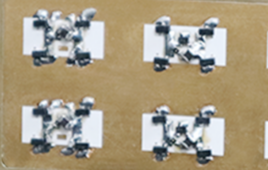Power, price, security, and easy deployment could lead IoT companies to adopt iSIM over eSIM and plastic SIM cards.
 IoT devices such as smart meters that run on batteries must consume little energy because replacing batteries is costly and in some cases, impractical. One way to cut energy use while at the same time cutting manufacturing costs in cellular-connected devices is to adopt integrated SIM (iSIM).
IoT devices such as smart meters that run on batteries must consume little energy because replacing batteries is costly and in some cases, impractical. One way to cut energy use while at the same time cutting manufacturing costs in cellular-connected devices is to adopt integrated SIM (iSIM).
As we explain in iSIM puts carrier information deep inside a device, iSIM embeds a device’s SIM within a SoC such as a cellular radio or applications processor. At MWC 2023, engineers from Sony Semiconductor Israel (formerly Altair) will explain how iSIM can provide better security at lower costs and energy use. To get an overview of iSIM, EE world spoke with Dima Feldman, VP Product Management and Marketing.
“Over the past six months, we have realized to value of iSIM for IoT,” Feldman told EE World. According to Feldman, while both eSIM and iSIM allow for downloading of carrier profiles and let a device have one or more profiles, what’s good for an iPhone isn’t necessarily good for IoT devices. Why?
Feldman explained that a cellular profile for an iPhone uses several hundred kilobytes. While that’s nothing compared to a phone’s storage capacity, it’s too large for some IoT devices. A few hundred kilobytes could be as much as an IoT device’s entire data plane. Another problem stemming from such a large profile is the energy use an IoT device might need to download a profile in the field. That’s not a problem for a phone but certainly is for an IoT device expected to run for years on a battery. Furthermore, Feldman said that using an iSIM reduces manufacturing costs by eliminating one part from an IoT devices bill of materials.
In addition to needing one fewer part per unit, an IoT device manufacturer no longer needs to build different units for each country or cellular carrier. “By loading a profile right before shipping,” said Feldman, “device manufacturers and have a single SKU.” He also noted that installation technicians can even download a profile through a smartphone onsite based on location. He cited an example of a technician choosing between carriers based on signal strength at a given location.
When asked how iSIM enhances security, Feldman noted that with SIM cards, bad actors can easily replace a device’s SIM in the field, changing its connectivity. According to Feldman, an engineer can remove an eSIM and solder in a new one in just ten minutes. Replacing iSIMs is impossible because it’s integrated into an SoC’s silicon. iSIM places a device’s root of trust (RoT) inside the device where it can’t be physically removed. The industry has a GSMA standard, (IoT SAFE,) for provisioning an IoT device from the cloud.




Tell Us What You Think!